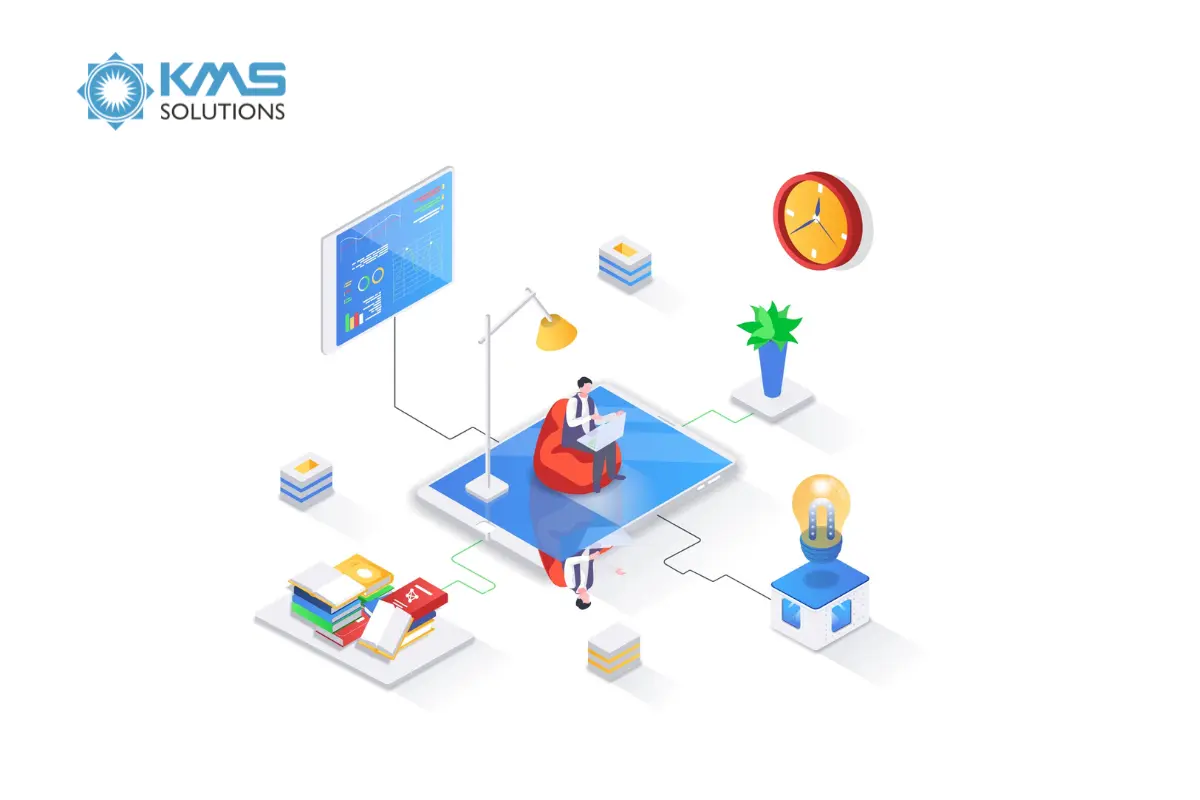The decision to choose between onshore and offshore development models is a critical one for businesses seeking to build or enhance their software solutions. Onshore development involves teams located within the same country as the client, while offshore development utilizes teams situated in different countries. Each approach offers distinct advantages and disadvantages, influencing factors such as cost, time-to-market, cultural compatibility, and control.
In today’s fast-paced world, companies have multiple ways to develop their software, one of which is outsourcing their projects for better and quicker results. Outsourcing software development can be classified into different types, with two of the most commonly used being onshore vs offshore development. Let’s explore both to understand them better.
1. What is Onshore Software Development?
Onshore development is like having your tech team right next door. It involves working with software developers and engineers based in the same country as your business, allowing for close collaboration. With onshore development, you not only share the same time zone, but also cultural understanding and alignment with local business regulations.
When evaluating onshore software development for your project, it’s crucial to consider both the pros and cons. Here’s some detailed list to guide your decision:
Pros:
- Enhanced Communication: Proximity enables seamless communication and collaboration between your team and the development team, leading to faster feedback loops and better alignment.
- Cultural Synergy: Sharing a cultural background fosters better understanding and reduces the likelihood of miscommunication or cultural clashes.
- Local Compliance: Onshore teams are well-versed in local laws and regulations, ensuring compliance and minimizing legal risks.
- Higher Quality Standards: Access to local talent pools often results in higher-quality deliverables and better adherence to industry standards and best practices.
- Aligned Time Zones: Being in the same time zone streamlines scheduling and facilitates real-time collaboration, reducing delays and improving productivity.
- Enhanced Innovation and Quality Control: Proximity to your development team can enhance quality control processes and foster a culture of innovation through close collaboration and knowledge sharing.
- Lower Risk Profile: Onshore development may mitigate some risks related to data security, intellectual property rights, and project confidentiality compared to offshore counterparts.
Cons:
- Increased Costs: Onshore development generally involves higher hourly rates compared to offshore options, resulting in increased project expenses.
- Narrow Talent Pool: Depending on your location, access to specialized skills or technologies may be limited, affecting the scalability of your project.
- Resource Constraints: Competition for local talent can lead to resource shortages or longer lead times for project initiation.
- Market Sensitivity: Economic fluctuations or market trends in your region may impact the availability and affordability of onshore development services.
- Burnout Risks: Proximity may blur the lines between work and personal life, increasing the risk of burnout among team members.
Onshore software development offers significant advantages, such as straightforward communication, cultural alignment, and compliance with local regulations. However, it also involves higher costs and a more restricted talent pool.

What is Offshore Software Development?
Imagine your software development team as a skilled crew navigating international waters. That’s offshore software development. It involves partnering with software professionals in another country, often across oceans. This approach opens up access to global talent pools, usually at a more budget-friendly cost compared to onshore options.
Offshore outsourcing can be a valuable asset for businesses seeking to optimize expenses while tapping into a diverse range of technical expertise.
Offshore software development presents a variety of benefits and challenges that need careful consideration when planning your project. To make an informed decision, carefully consider the following factors:
Pros:
- Cost Efficiency: Offshore outsourcing costs typically offer lower hourly rates compared to onshore options, leading to significant cost reductions for your project.
- Global Talent Access: Offshore teams provide access to a diverse talent pool worldwide, allowing you to tap into specialized skills and expertise not available locally.
- Scalability: Offshore development enables rapid scalability, allowing you to quickly adjust resources based on project needs without the constraints of local talent availability.
- Continuous Productivity: Working across different time zones allows for continuous productivity, with teams in various locations working sequentially to reduce project turnaround times.
- Innovative Solutions: Offshore teams often bring fresh perspectives and innovative approaches to problem-solving, fostering creativity and a culture of innovation.
Cons:
- Communication Barriers: Geographical and cultural differences can introduce communication barriers and misunderstandings. However, these challenges can be significantly reduced by using advanced collaboration tools and best practices in project management. Establishing clear communication protocols, holding regular meetings, and using tools that support real-time collaboration can enhance understanding and streamline project delivery.
- Quality Assurance Issues: Concerns about lower-quality deliverables due to language barriers and cultural differences can be addressed by implementing rigorous quality assurance processes and ensuring clear documentation of project requirements. Partnering with offshore teams that have a strong track record and investing in thorough training sessions to align understanding can also mitigate these risks.
- Time Zone Challenges: Working across different time zones can lead to scheduling conflicts and delays, but this challenge can be turned into an advantage. By carefully planning work schedules to create overlapping hours and using the “follow-the-sun” model, projects can benefit from continuous productivity, accelerating the development process.
- Data Security Risks: Potential risks to data security, intellectual property rights, and confidentiality can be mitigated by conducting thorough due diligence on software development outsourcing partners to ensure they adhere to stringent security standards. Using secure communication channels, implementing non-disclosure agreements, and ensuring compliance with international data protection regulations can safeguard sensitive information effectively.
- Risk Mitigation: Offshore development may be influenced by external factors such as political instability, economic fluctuations, and natural disasters. These risks can be managed by diversifying the geographical locations of outsourcing partners. Establishing contingency plans and maintaining flexible project management approaches can also help navigate unexpected challenges, ensuring project continuity.
Offshoring software development company provides cost savings, access to global talent, and scalability. However, it also presents challenges like communication barriers, quality concerns, and time zone differences. By thoroughly assessing these pros and cons in relation to your project needs and risk tolerance, you can decide if offshore development is the best option for you.

Key Differences Between Offshore and Onshore Software Development
Here are the key distinctions between onshore and offshore development based on various factors:
# | Factor | Onshore Development | Offshore Development |
1 | Location | A team within the same country | Establishing a team in a different country |
2 | Proximity | Close proximity allows for easier and quicker access to the development team | Geographical distance can pose challenges and may result in communication and reporting delays |
3 | Cultural fit | Shared cultural norms, languages, and business practices can streamline collaboration | Cultural differences, varying work ethics, and inefficient time management can hinder project outcomes |
4 | Communication | Enhances comprehension through face-to-face interactions | Utilizes digital platforms like video calls, emails, and chats for communication |
5 | Talent base | Restricts the talent pool to local employees, limiting access to specialized skills | Provides access to global talent and exceptional expertise beyond domestic borders |
6 | Language Barrier | Facilitates communication in the local language with minimal language barriers | May necessitate clear communication strategies and language proficiency support to overcome challenges |
7 | Time zone differences | Seldom affected by time zone differences, making it easier to schedule meetings and maintain collaboration | Requires careful planning and effective scheduling to manage time zone variations |
8 | Work Cycle | Aligns with local business hours, making coordination convenient | Operates on a 24-hour work cycle, offering potential time-saving benefits |
Selecting the Best Model for Your Software Project
Choosing the right development model for your software project depends on evaluating your specific requirements. Here are some key factors to consider:
Budget Considerations
Budget is often a crucial factor. Onshore development tends to be more expensive due to higher salaries and overhead costs, but the advantages of easier communication and potentially faster turnaround times can justify the investment. Offshore development, on the other hand, offers a more cost-effective option due to lower wages and operating costs in the chosen country.
Project Complexity
The complexity of your project should also guide your decision. Simpler projects might benefit from the lower costs of offshore development, while complex projects requiring close collaboration and frequent communication may be better suited for onshore development.
Required Expertise
The specific skills your project demands can influence your choice. Onshore development may be limited by the local talent pool, whereas offshore development can provide access to a broader range of specialized skills.
Communication Demands
Seamless communication is key to any project. Onshore development offers advantages like shared language and time zones, enabling smoother collaboration. Offshore development requires more deliberate communication strategies, often involving additional tools to manage language barriers and time zone differences.
Time Zone Considerations
Time zone alignment affects project workflow. Onshore development eliminates time zone challenges, allowing for real-time collaboration. Offshore development, however, requires careful scheduling and flexibility to accommodate time zone differences.
Cultural Compatibility
Cultural understanding is another factor that can affect teamwork. Onshore development benefits from shared cultural norms, reducing the likelihood of miscommunication. Offshore development, though culturally diverse, requires an intentional focus on communication and team-building to ensure alignment across cultures.
By weighing these factors, you can choose a development model that best fits your project needs and sets you up for a successful outcome.
Read more: Top 5 Countries for Offshoring Software Development

Conclusion
With a proven history of assisting enterprises in scaling their digital transformation for over 15 years, KMS Solutions has established itself as a trusted offshore software development company. Additionally, we have also operated 3 Offshore Development Centers (ODCs) in the APAC region, providing a wide range of services, including digital platform development, app maintenance & support, software quality assurance, and business process services.
With KMS Solutions as your offshore development partner, you can focus on your core business objectives while we handle the complexities of software development, delivering high-quality results that drive growth and success in an increasingly competitive market. Contact us today for the right offshore software development project!











